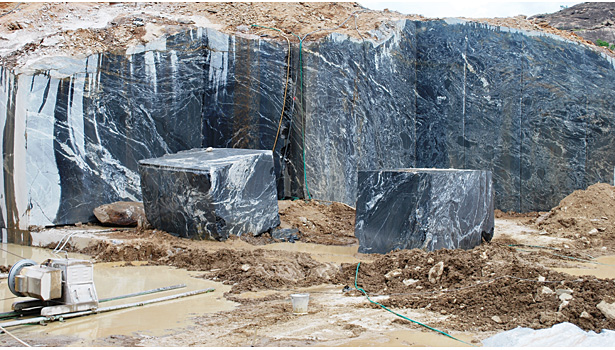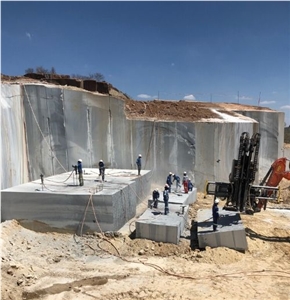A Trip Through Granite Quarries in South Africa: Introduction Nature's Virtuosity
A Trip Through Granite Quarries in South Africa: Introduction Nature's Virtuosity
Blog Article
Unveiling the Mysteries of Granite Quarrying: Where Toughness and Beauty Meet
The globe of granite quarrying is a realm where the raw stamina of nature converges with human creativity to create frameworks that stand the examination of time with an air of elegance. From the depths of quarries to the careful polishing in workshops, the procedure of changing granite right into building marvels is an intricate dance of tradition and development. As we peer right into the depths of this old craft, we start to reveal the surprise intricacies that form the really significance of our constructed atmosphere.
The Beginnings of Granite Quarrying
In the annals of architectural background, the origins of granite quarrying are shrouded in a tapestry of old workmanship and geological wonders. Dating back to old Egypt and Mesopotamia, the removal of granite from quarries noted the beginning of a trip that would ultimately result in the production of a few of the world's most famous frameworks.
Granite quarrying's roots can be traced to the experienced craftsmens that acknowledged the rock's durability and visual charm. Via a combination of primitive tools and large resolution, these very early quarry employees uncovered granite blocks that would become the foundation of civilizations.
As civilizations progressed, so did the techniques of quarrying granite. The Romans, renowned for their engineering expertise, developed sophisticated approaches for drawing out granite to build monoliths, temples, and roadways that stood the test of time.
The legacy of these ancient quarrying techniques remains to shape contemporary style, with granite remaining a symbol of toughness and style in building projects around the world. (granite quarries in south africa)
Tools of the Quarrying Trade
The advancement of granite quarrying strategies from old worlds to modern times highlights the essential function played by the tools of the quarrying trade in shaping the sector's techniques. In ancient times, quarrying devices were rudimentary, commonly consisting of knives, hammers, and wedges made from materials like bronze or iron. These tools needed substantial workforce and time to extract granite obstructs from quarries.

Furthermore, the introduction of pneumatically-driven tools and high-powered machinery has actually significantly reduced the physical labor required in quarrying procedures, enhancing worker safety and security and productivity. As the quarrying sector remains to introduce, the devices of the profession stay at the forefront of driving progression and shaping the future of granite extraction.
Extracting Blocks of Granite
Using accuracy equipment and advanced techniques, the removal of granite obstructs from quarries has actually ended up being a sophisticated procedure in the contemporary quarrying industry. The first step entails recognizing the area and additional resources dimension of the granite deposit to determine the most efficient removal method. When an appropriate website is selected, the removal process begins with the exploration of openings for the positioning of explosives. Controlled blowing up techniques are after that employed to disintegrate the granite into convenient sections.

Polishing and Completing Techniques
To attain a remarkable surface area on granite blocks, experienced craftsmens utilize a series of meticulous sprucing up and finishing techniques. After the initial removal and shaping processes, the granite obstructs go through a thorough polishing stage to improve their all-natural charm and durability. One typical method made use of in brightening granite is diamond abrasion, where commercial rubies are used to grind and brighten the stone to a smooth surface. This procedure not only develops a lustrous surface however likewise ensures harmony in color and texture throughout the granite block.
Along with polishing, ending up methods are put on further refine the granite's appearance. These strategies may include flaming, honing, or brushing, each offering distinct appearances and finishes to fit different visual choices. Flaming, for example, includes exposing the granite surface area to high temperature levels to create a harsh, distinctive finish, ideal for outdoor applications where slip-resistance is necessary. Sharpening, on the various other hand, offers a matte finish that is smooth to the touch, excellent for indoor counter tops and floor covering. By meticulously selecting and using these brightening and ending up techniques, artisans can change raw granite blocks into beautiful items that showcase both toughness and beauty.

Ecological Effect and Sustainability
With the growing focus on ecological consciousness in the sector, granite quarrying techniques are significantly scrutinized for their effect on natural sources and lasting sustainability. In addition, the transportation of granite from quarries to processing centers generates carbon exhausts, further adding to ecological destruction.
To reduce these effects and ensure sustainability in granite quarrying, sector stakeholders are taking on various steps. Applying sophisticated modern technologies to reduce energy usage and water use, recovering quarried land for eco-friendly restoration, and advertising accountable sourcing techniques are some methods being employed. Additionally, qualifications such as the Woodland Stewardship Council (FSC) and the Management in Energy and Environmental Style (LEED) assistance consumers identify eco-friendly granite products.
Conclusion
In verdict, granite quarrying is a procedure that requires specialized tools and methods to essence blocks of granite and polish them to a high level of coating. their explanation While the ecological impact of quarrying can be considerable, initiatives are being made to improve sustainability practices in the sector. On the whole, granite quarrying is a delicate equilibrium between using the toughness and sophistication of this natural stone while minimizing its effect on the setting.
Report this page